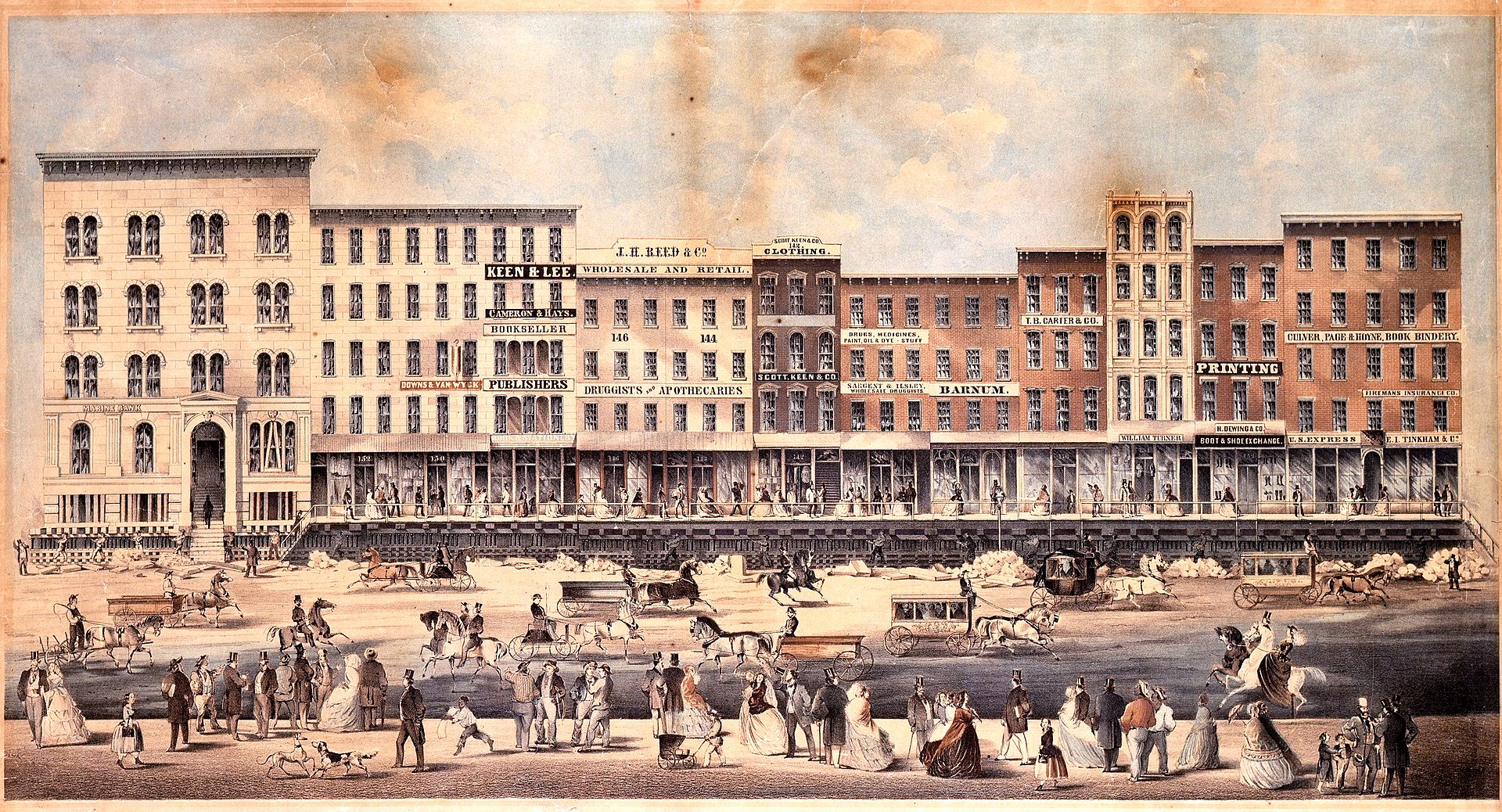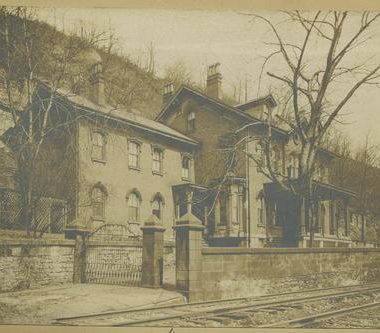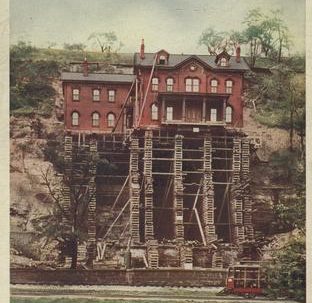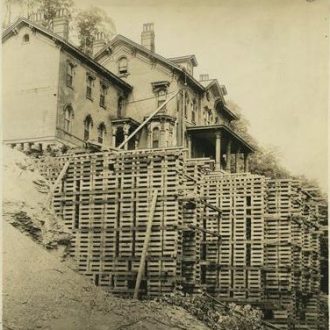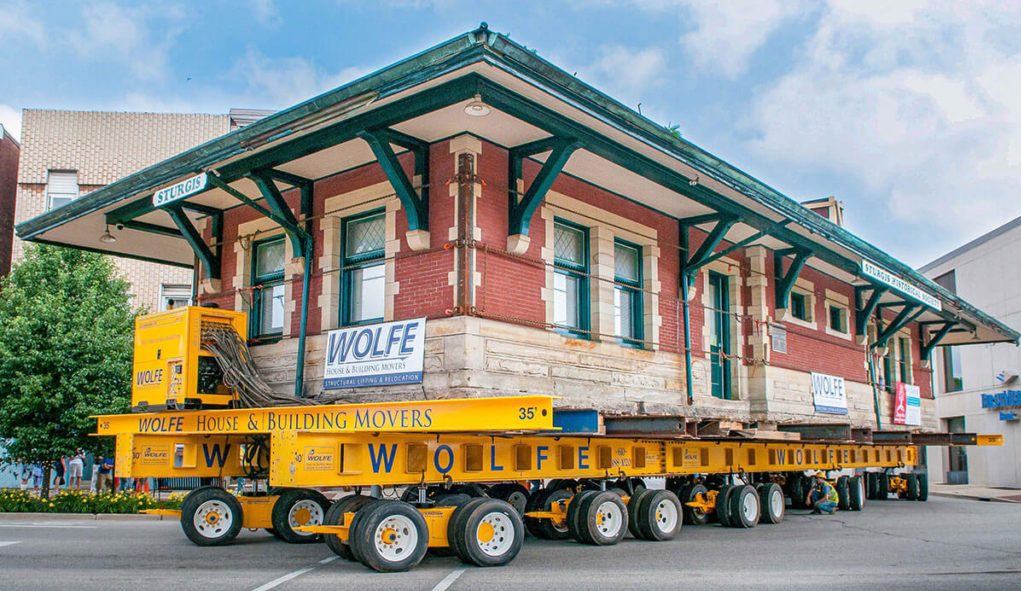Being able to lift a whole building and relocate it with very little to no damage is as astonishing as it is unbelievable. ‘Structural relocation’ came about in the 1700’s when people would move their homes with horses or oxen, however, the buildings would be damaged in the first few yards with chimneys collapsing due to poor structure bracing. With the industrial revolution growing throughout the 18th century, the screw jack was invented and made a world of a difference; ultimately propelling the act of structural relocation into popularity.
One of the first major projects done using screw jacks was the lifting of Chicago in 1858. During the beginning times of becoming a major city, the Windy City was only 4 feet above Lake Michigan, which caused a major issue with drainage and sewer systems. Due to being built on a swamp, water had nowhere to drain off to, thus creating large pools of bacteria, sewage, and other harmful diseases. This was a big contributor to the 1854 cholera outbreak that killed 6% of Chicago’s population. Rather than abandoning the growing city, they decided on lifting it to install proper sewage and drainage systems beneath the roads. The first building raised was a four-story brick structure that weighed 750 tons, accomplished by the work of 200 jack screws bringing the building 6’2” taller without damage. Once the process was proving to be extremely successful, an entire city block was raised all at once! The block included multiple brick and stone buildings at 320 feet long, with varying heights. In total, this block was estimated to weigh 35,000 tons! For comparison, this block would equal the weight of 70 million footballs! The process was so gradual, that businesses remained open during the 4’8” lift done by the work of 6,000 screw jacks. Although none of these buildings still stand due to the Great Fire in 1871, the foundations were the bases for new buildings.
Since buildings were being raised, that meant it would be possible to move them laterally. One house in Pennsylvania was located beside the railroad, which started becoming very busy with the industrial revolution. In 1903, the Captain Samuel Brown Mansion was moved up a bluff away from the train tracks. The Eichleay Company took over this project and used cribbing to raise the house before moving it backwards, creating a step ladder movement. In total, the house was moved upwards 168 feet and then backwards 500 feet from its original position in less than 100 days. The mansion had no damage, ‘not even a single windowpane’. Unfortunately, like Chicago, the mansion burned to the ground in 1913. Now with modern technology, incredible moves like this are still possible but done quicker, and more frequently.
Moving buildings is now purposeful for saving historic sites, making room for newer buildings or additions, as well as repairing any foundation work. On average, costs range between $12 to $16 per square foot, meaning relocation can often be less expensive than deconstruction, transporting, and rebuilding. The machinery has also greatly improved. Once a building has been approved for relocation and new foundations have been constructed at the new location, surrounding obstacles are cleared such as foliage, furniture, etc. Following review of blueprints to determine weight bearing areas, crawlspaces are dug beneath the building for steel I-beam. These will be inserted into the crawlspaces and act as the main supports for the building. Cribbing comes next to bring extra support to the building and beams, as well as cross beams to the main supports. Once the building is adequately supported, hydraulic jacks are placed below the beams and the building is lifted to a height where transportation machinery can be inserted. Special dollies are used to move buildings, as many vehicles are much to small to pull enormous weights.
The dollies are controlled by remote, and motors are installed inside the wheels themselves. This allows the dollies to have enough power to move the building, as well as top-notch control from the remote. The wheels are also able to move 360 degrees allowing for the building to be moved in any direction needed. However, before any of the movement can begin, the route must be determined and observed. Traffic lights may need to be lifted or removed, road widths need to be measured to ensure the building will even fit, and traffic must be rerouted. Once the building is at its new location, it is positioned accurately above the new foundation, where it is then lowered back onto stands. Once the utility lines are connected again, the foundations can be completely secured, and the structure has been successfully relocated.
Michigan has quite a few structural relocations due to historic purposes or eroding shorelines. The Historic Train Depot in Sturgis was relocated in 2014 to downtown to allow its beauty to be easily observed by travelers as it was easy to miss if you weren’t aware of its presence. The town also had plans to repurpose it into an interactive children’s museum! It was built in 1867 and weighed 304 tons. The depot is almost 4,000 sqft, and has 2-foot-thick stone walls in some areas. Wolfe House & Building Movers oversaw the job and put a step-by-step process of the move on their website, which you can find here! Wolfe is very well known for moving one of the heaviest buildings in the world to ever be moved – The Belleview Biltmore Hotel in Florida. This 119-year-old, 5-story building was rotated 50 degrees and then moved 350 feet from its original position, weighing 1,750 tons.
Moving buildings is such an incredible concept, there are also shows about these projects! It’s truly incredible how far our industry has come, not only with preserving history, but making it as well. If you liked this blog, please share it across social media via the icons below. Also leave a comment with any ideas or topics for future blogs!
Share this Post


